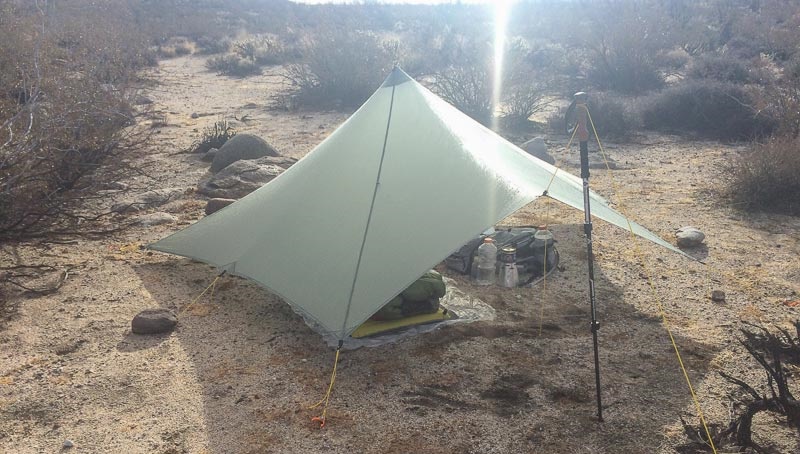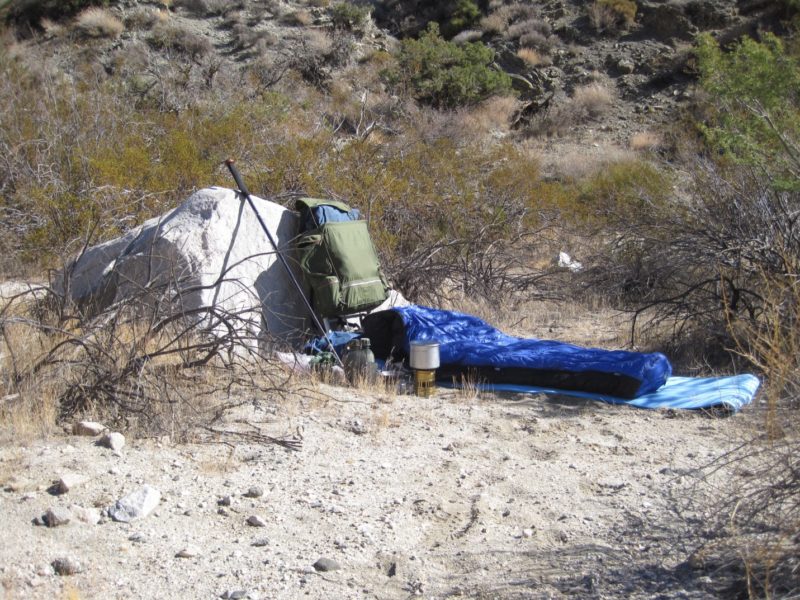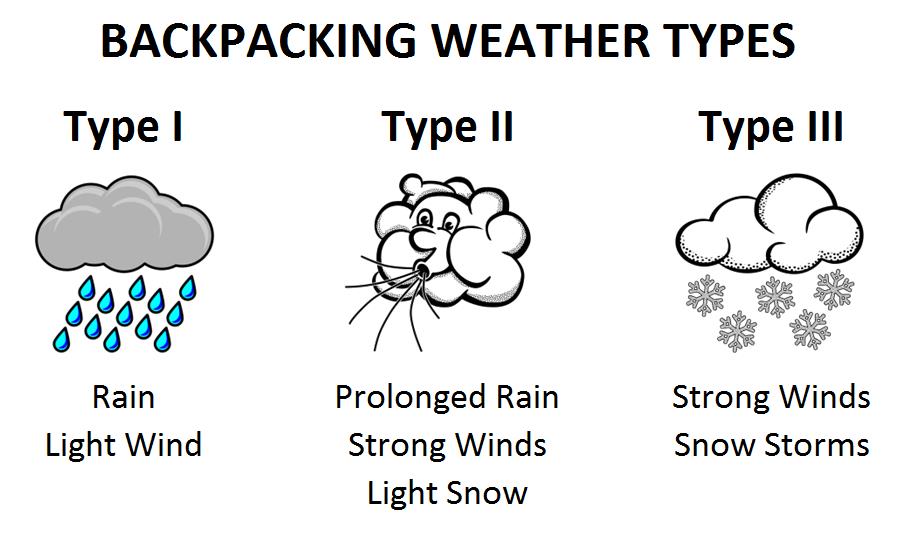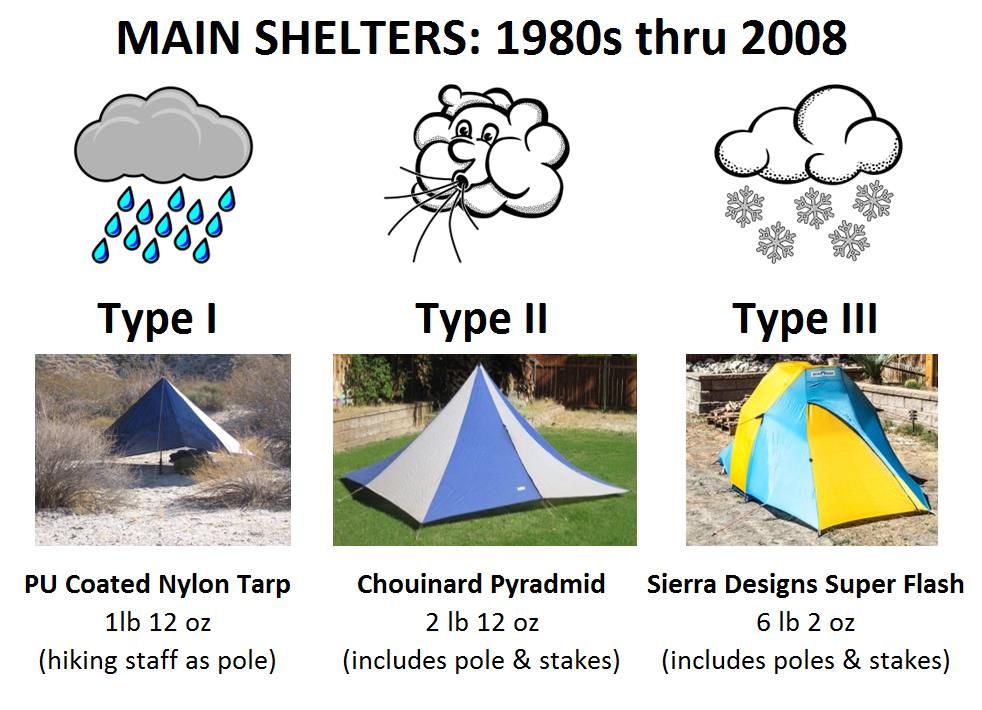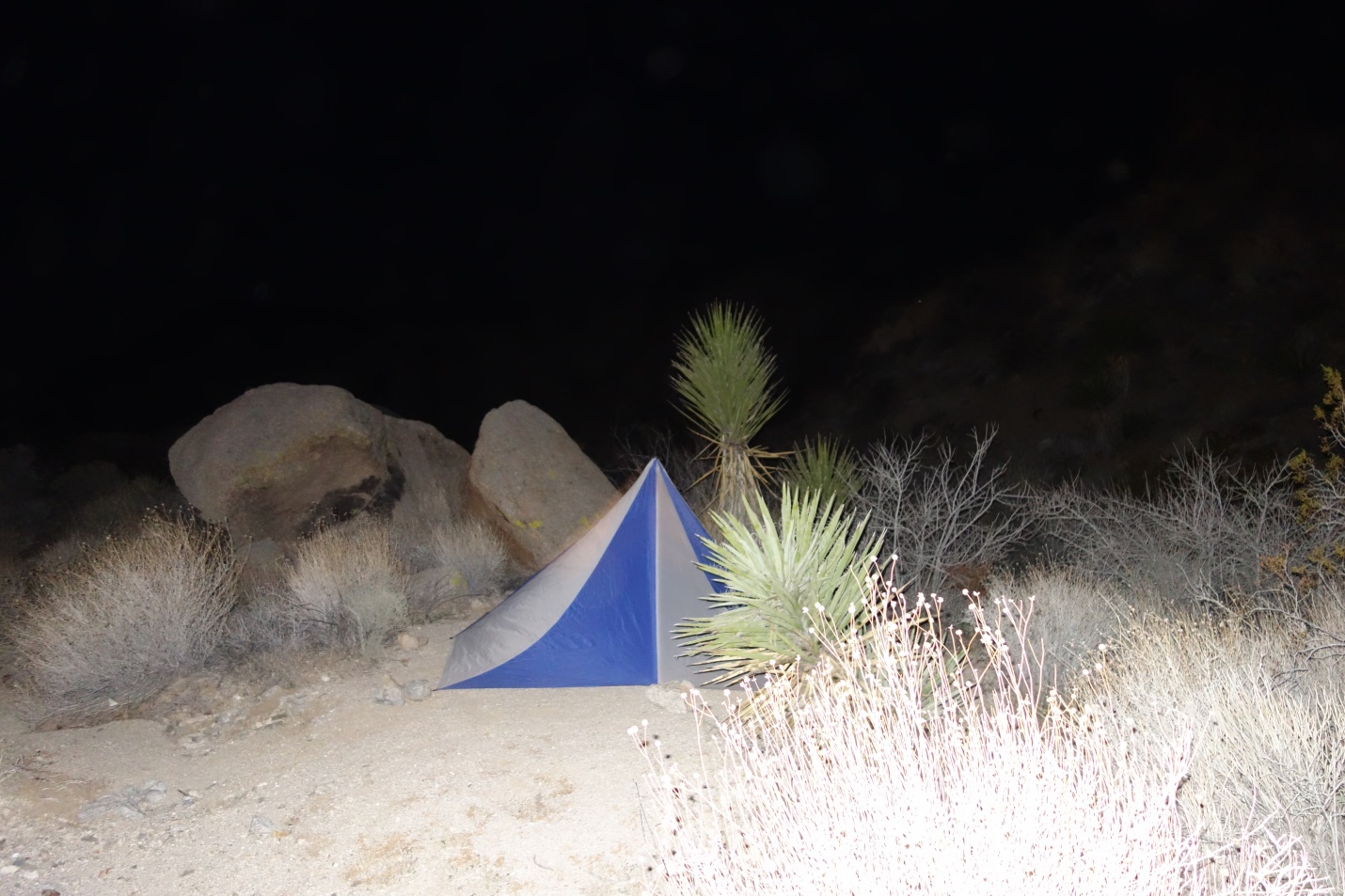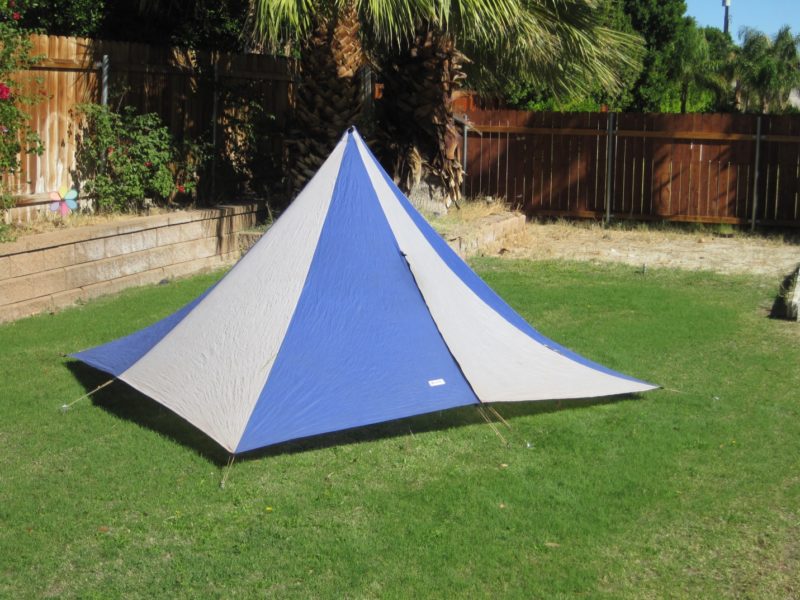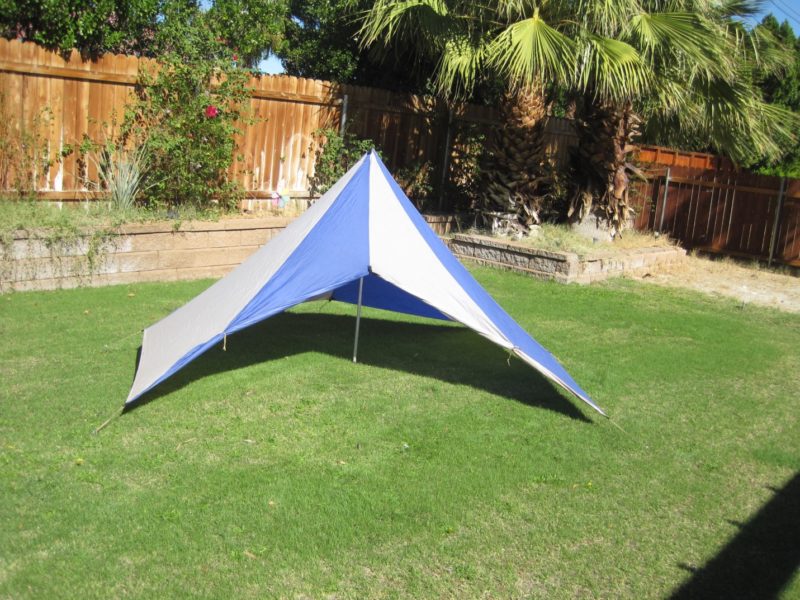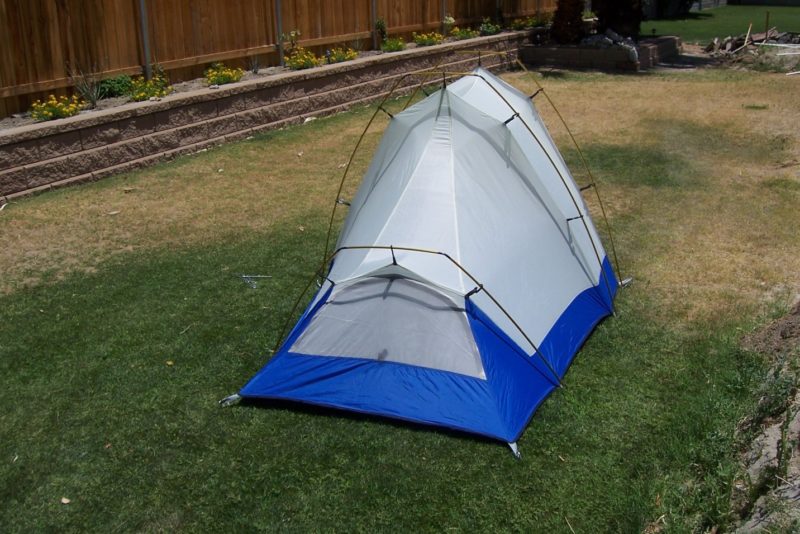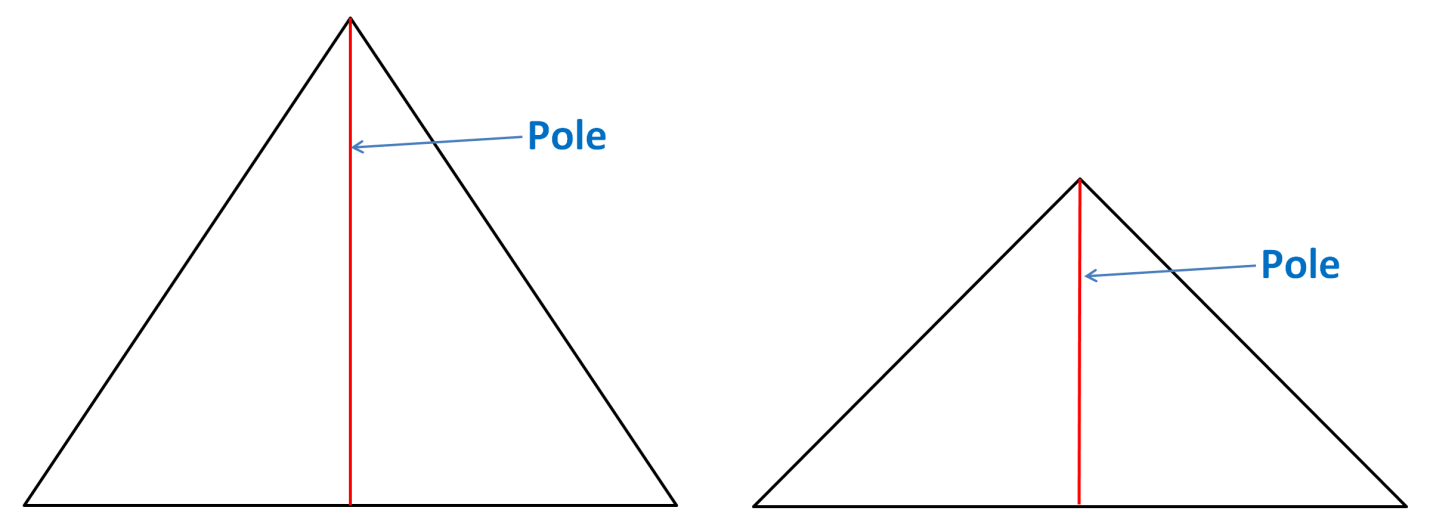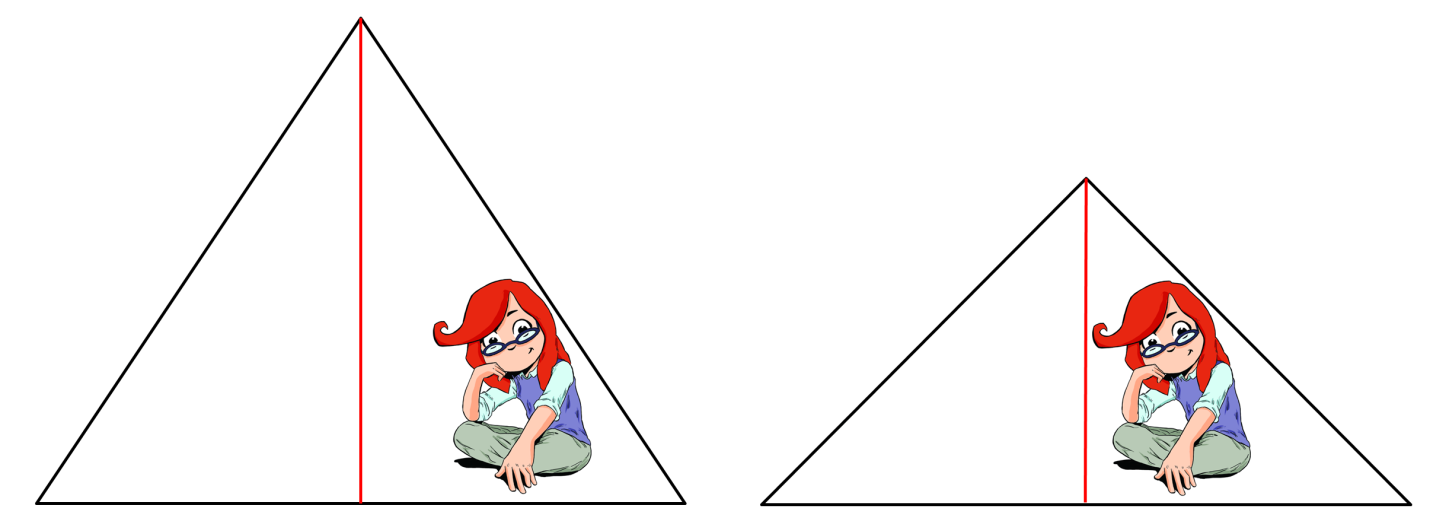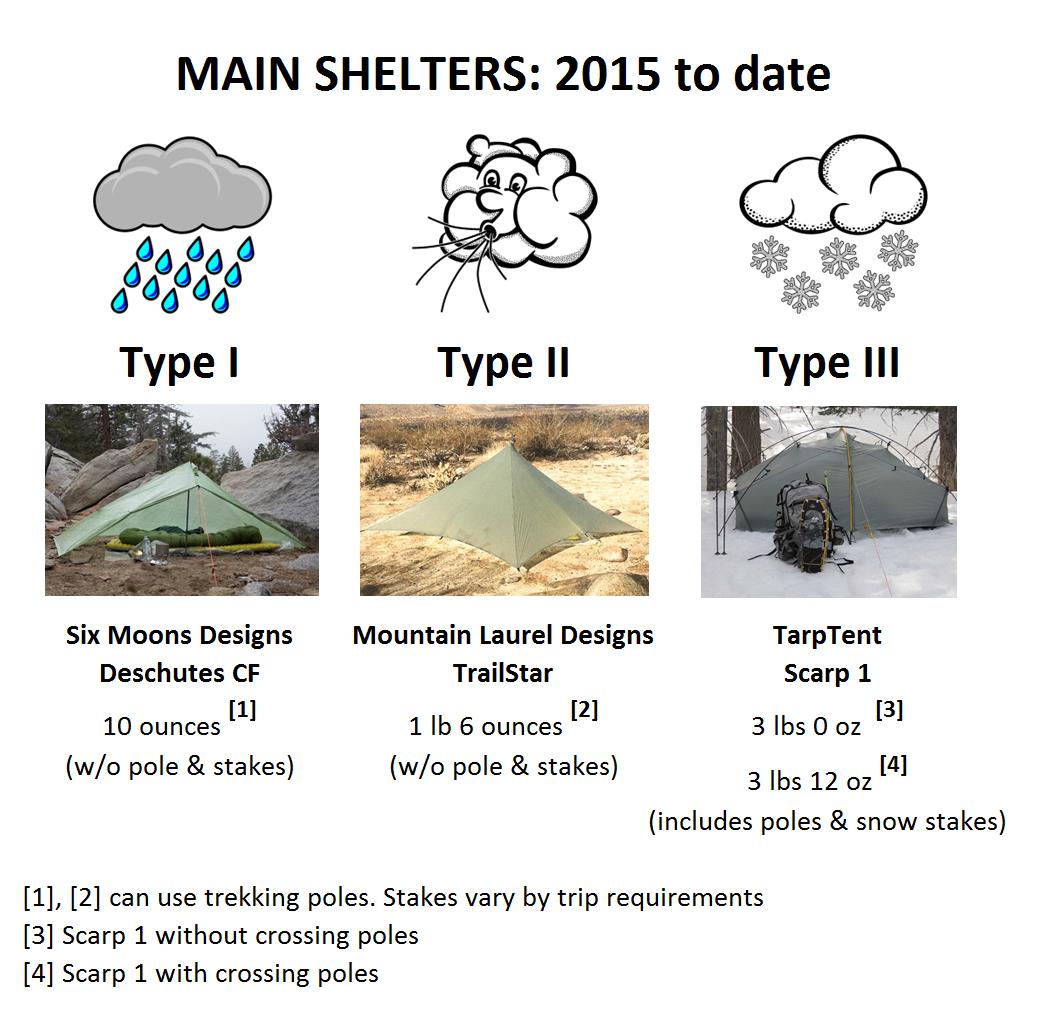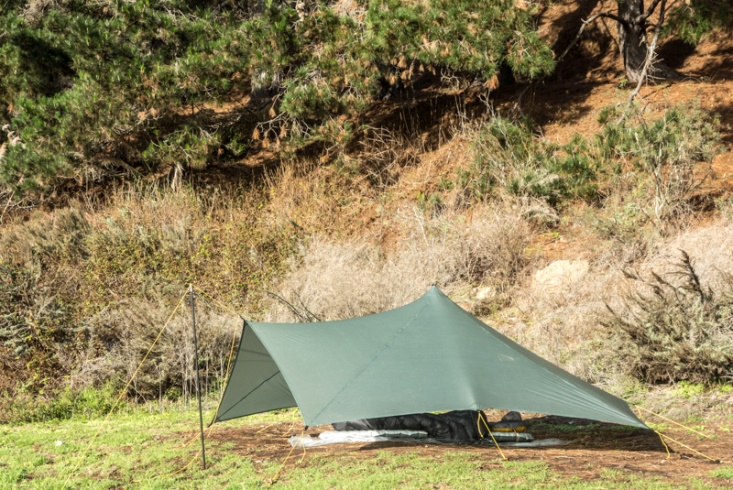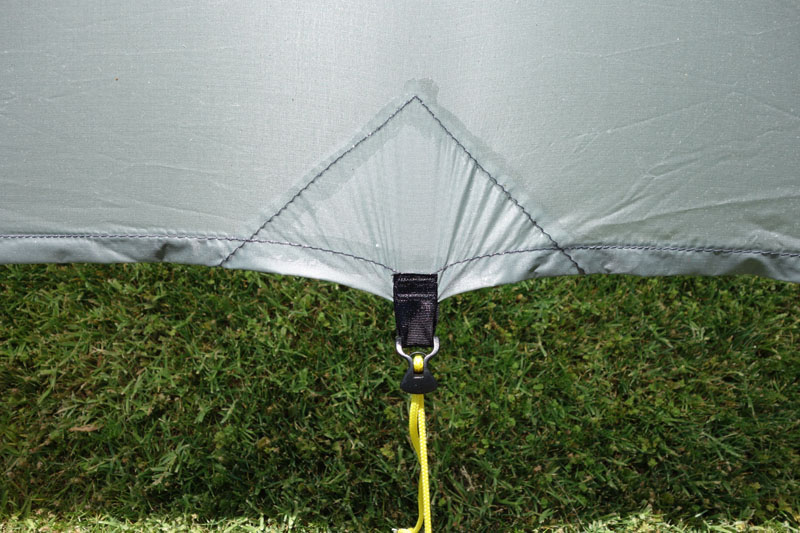Trailstar Long Term Review
I’ve had this shelter for 5 years; however it isn’t my “go to” shelter and it might not be the best shelter for you. So how did I get to this point (the Trailstar) and why.
The search for the perfect backpacking shelter
The best night camps are those that don’t require a shelter at all.
When I started backpacking as a teenager I couldn’t afford a tent, so I just slept outside under the stars and brought a nylon tarp in case it rained. Most of my trips were in the Southern Sierra Nevada where the weather is usually predictably nice.
But when the weather turns really bad, a serious shelter is mandatory. Honestly, I have never searched for the “perfect shelter.”
I haven’t used a lot of shelters over the past 50+ years, but I have spent a lot of time in shelters.
When I identified a need, I searched for a solution and early on I figured out there isn’t a perfect shelter. The perfect shelter is the one that keeps you warm, dry, and safe during a specific set of conditions. Conditions and needs change frequently.
In the late 1970’s I moved to Palm Springs and extended my wanderings to the desert. I quickly found out that in the spring and fall deserts can get windy – like 50 mph windy (or windier) and a tarp wasn’t the right tool. About the same time, I started to do winter snow backpacking trips, which presented a new set of difficulties to address shelter-wise.
Three Types of Backpacking Weather
Over the years I’ve developed my own weather categories. What shelter I take is dependent upon the type of weather I expect.
Shelter Attributes
Early on I learned that a poor-weather backpacking shelter needs to fulfill three attributes and at best will only do two of them well:
- Stable in high winds
- Shed snow
- Be lightweight
Along with this revelation, I also figured out it is best to have three different types of tents in your gear closet:
- Type I Shelter: A lightweight shelter that can handle mild rain and light wind (typical 3 season weather). This can even include a simple tarp.
- Type II Shelter: A tent to handle extreme wind, serious wind driven rain, extended downpours, or light snow (the worst 3 season weather).
- Type III Shelter: A double-walled tent for full-on winter snow storms and wind. Also known as a 4 season shelter.
As you can probably guess, the weight and cost for these shelters increase as you go from a Type I shelter to a Type III. Smart backpackers will take the lightest shelter that meets the anticipated weather conditions. There is no reason to haul a 6 lb tent when the weather forecast is a 10% chance of rain, and a 2 lb shelter will be more than adequate.
My main shelters from the ‘80s until 2008
Type I Shelter
Most often I used a flat tarp that could be pitched many ways and sometimes a small poncho/tarp combination. These tarps met only Shelter Attribute #3: they were lightweight. They were not serious weather shelters.
Type II Shelter
A Chouinard Pyramid handled all my 3-season crappy weather.
The Chouinard handled Shelter Attributes #1 and #3: It was good in wind and (for its time) it was light. It was “okay” in snow. With an appreciable amount of snow, the snow piles up at the bottom of the sides and forces the sides inward, decreasing living space. Not a big problem with a large shelter like this. Plus, in this kind of weather, a single-wall shelter is prone to a lot of internal condensation on the walls. Pyramids with a single main pole do poorly in heavy snow, because they do not have the structure to handle large amounts of snow.
I still have it and use it occasionally. It is a single-walled, polyurethane coated nylon fabric, four-sided pyramid. Each side is 8’ long at the bottom. The center pole is around 6’ tall (it’s adjustable).
Type III Shelter
For serious winter weather (snow & wind) conditions, this Sierra Designs Super Flash handled the job well.
The Super Flash was one of the standard issue survival tents for the US Antarctic Program. It is a double-walled tent (reduces condensation problems), three-hoop tent. When all guylines and stakes are properly deployed (there are 20 stake out points for serious weather!) this tent checks of Shelter Attributes #1 and #2: it easily sheds significant winds and snow. But if fails Shelter Attribute #3, as it weighs over 6lbs.
So let’s summarize: three types of weather, three different shelters to meet the needs of weather, and weight and cost increasing from mild weather to heavy snow.
Some thoughts on “mids”
It is worthwhile to take pause and talk about “mids”. The Chouinard Pyramid shelter shown previously is a regular square base pyramid; that is it has four sides made of equal-sized triangles.
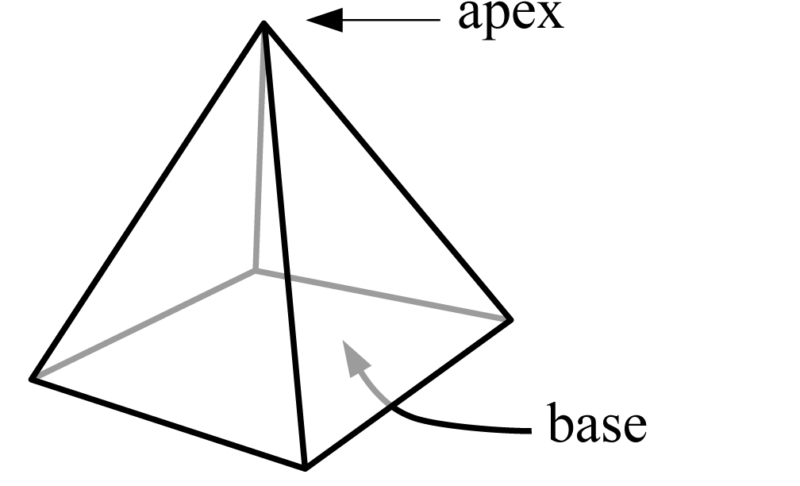
But not all modern Pyramid shelters are regular square base, four-sided shelters like the Chouinard. Some have rectangular bases and some have more than four sides. Generically all of these are called “mid” shelters.
Mids are effective in poor weather, assuming the center pole is strong enough for the conditions and it is properly staked out – that means many secure stakes in the proper places. Given the triangular sides, they shed wind well, some better than others. Let’s take a quick look at Mid Geometry.
Geometry
Handling Wind & Snow
The tall pyramid on the left will shed snow better than the one on the right, because it is taller and has steeper angles for the snow to slide off. However the short mid on the right has a lower profile, enabling it to better handle wind, but snow won’t slide of as easily. So if you want a mid to primarily protect against wind, choose a low mid; a tall mid is you primary concern is snow; and something in the middle if you need to handle both. But keep in mind that in heavy, heavy snow mids are not the ideal shelter because snow will build up at the bottom of the walls.
Headroom & Gear Storage
These diagrams are close to scale for some popular mids and you can see that the short mid on the right has a lot less headroom as you get closer to the sides.
My shelters since 2008 and today

In 2008, as I approached the young age of 60, I started to evaluate all my gear and replace heavy items with new lightweight stuff. I found that designs hadn’t changed much in decades, but materials had, especially the materials used for shelters.

With the advent of Cuben Fiber for backpacking use, a mid, like the zPacks Hexamid, was as light as the lightest simple flat tarp. A mid became, and remains, my Type I shelter. Three years ago I replaced the Hexamid with a larger Six Moon Designs Deschutes CF, which I covered in detail here.
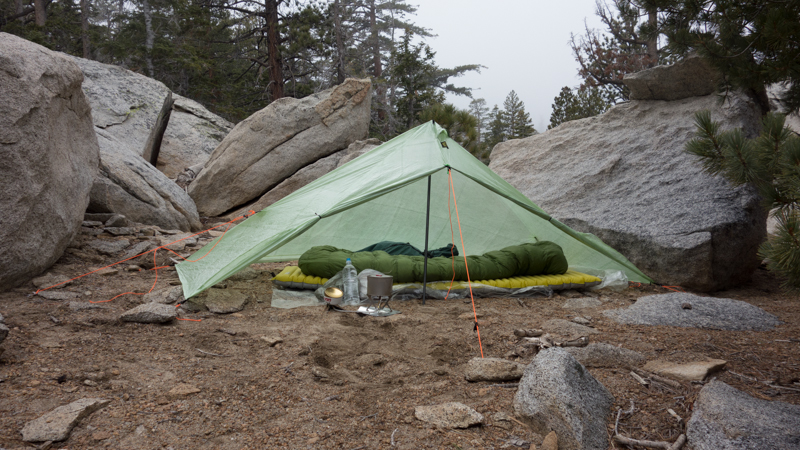
In 2010, while I was still researching for an acceptable lightweight Type II shelter, I made a final decision for a new Type III 4-season tent, a TarpTent Scarp 1 that I did an initial review in this post. I have nothing bad to say about this shelter, other than it is relatively heavy with the optional cross-poles for heavy snow and/or extreme wind. It is an exceptional shelter that I really, really like — except for the weight.
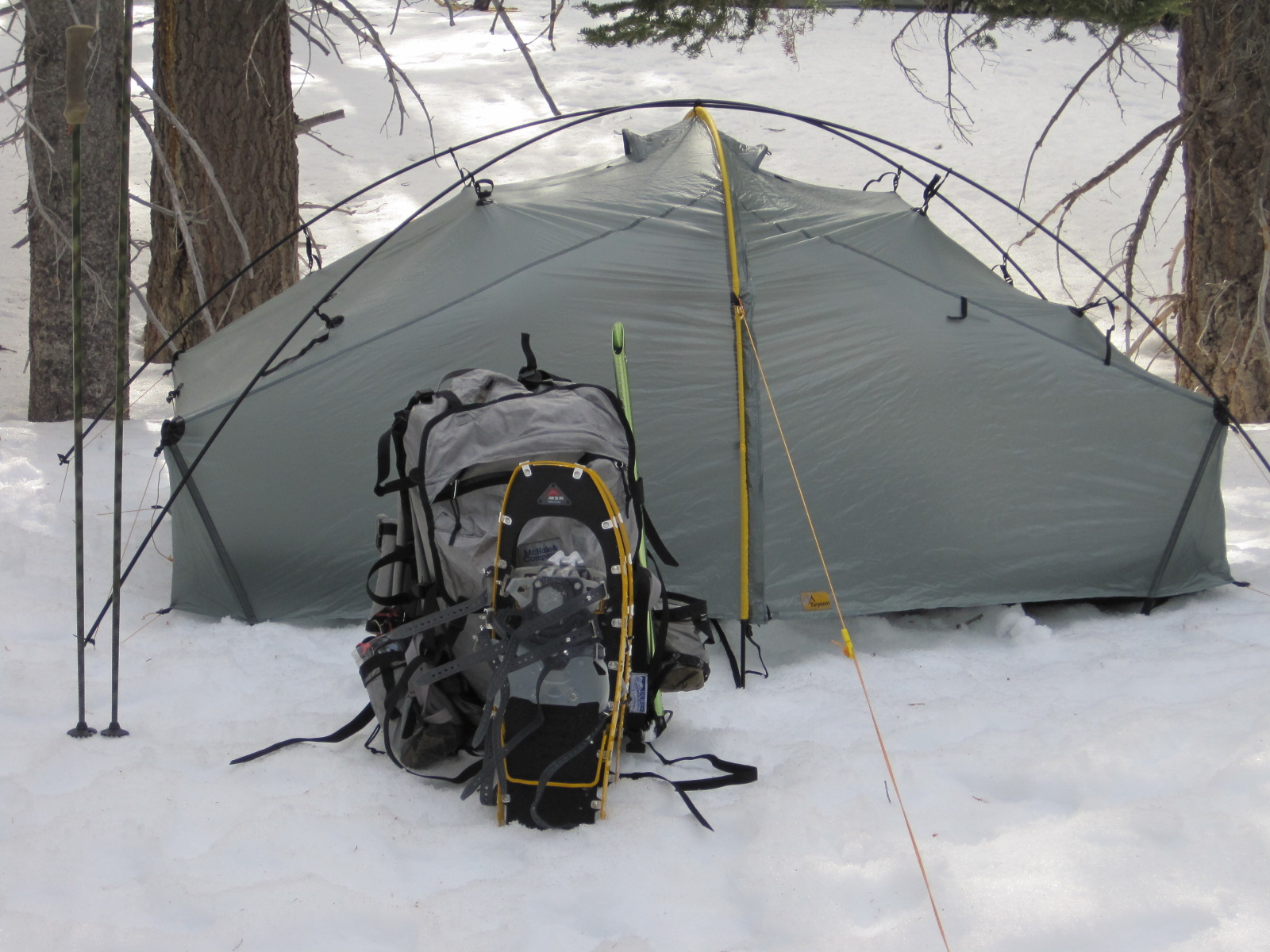
After a couple years of research I finally found by Type II shelter, the Mountain Laurel Designs TrailStar. My initial review is here.
For me there was some trial and error. None of my selections were bad choices, but over time I refined my primary 3-shelter inventory to this:
TrailStar Review
There is no lightweight tent or shelter that sheds wind as well as the TrailStar. Period. This is the reason I bought it.
It will handle snow, but for storms that dump large amounts of snow it isn’t the shelter one would want (even if you pitch it high with steep wall angles).
Cuben Version vs The Silnylon Version
The general consensus one the Internet seems to be that the Cuben version is almost impossible to pitch because it has 5 sides and Cuben has no stretch. The Silnylon is easy to pitch because the material stretches. This was my first thought when I read Chris Townsend’s TrailStar Wars, and it is one of reasons I bought a Sil version. But most importantly, Silnylon sheds snow much better than Cuben Fiber. However, the TrailStar is not a shelter for serious snow storms.
Without a doubt, the Silnylon is going to be easier to pitch and will be able to be pitched in configurations that Cuben can’t or would be extremely difficult to accomplish. But over the years I have thought about Chris’s findings and have come to the conclusion that perhaps Chris and Colin might have been wrong. However, I don’t own a Cuben version so I can’t confirm my “theory.” Because Cuben doesn’t stretch, keeping guylines matched to the plane of the seams would be critical and this might have been the problem because they were used to pitching silnylon TrailStars; on the other hand the cut of the Cuben might not be exactly the same as the Silnylon. The point of this rambling paragraph is that I have a Silnylon TrailStar and that is what I am reviewing.
Features and benefits
- Legendary wind protection.
- It has tremendous amount of living space.
- Most owners who use it as a solo shelter call it palatial. It can easily support two people and even three in a pinch.
- It’s a tarp, so you can pitch it in several configurations.
- In the standard pitch the shelter has a triangular entrance that provides a wide-angle view of the outside world.
- Plenty of room to safely cook inside with a stove. (Note: this comment assumes you have common sense; attorneys for gear manufacturers know there are some really dumb people on the planet who have a propensity to sue, so they say it is not safe to use a stove inside a shelter – you must decide for yourself which group you belong to).
Some complaints I have heard…
Before I list and address them, keep in mind that this is a “shaped” tarp, not an enclosed tent. If you have never slept out under the stars, prefer to always sleep in an enclosed tent to isolate yourself from bugs and insects, this shelter isn’t for you. And that’s okay, each of us has our preferences and there is no correct way to sleep outdoors.
- “The footprint is too large and I often can’t find a suitable site to pitch it.”
The footprint is about the same as my old Chouinard Pyramid. I really think part of the complaint is due to what I call spatial conditioning. Many people, who are used to using a tent with a built-in floor, look for site that will “fit” their shelter.
Since I usually sleep without a shelter, I look for a spot that will fit only my sleeping bag and gear. Since my TrailStar doesn’t have a floor, I can pitch it over a perfect “sleeping bag” site. I’ve pitched over small boulders, shrubs, and sloping ground… but the spot I sleep on was nice and level.
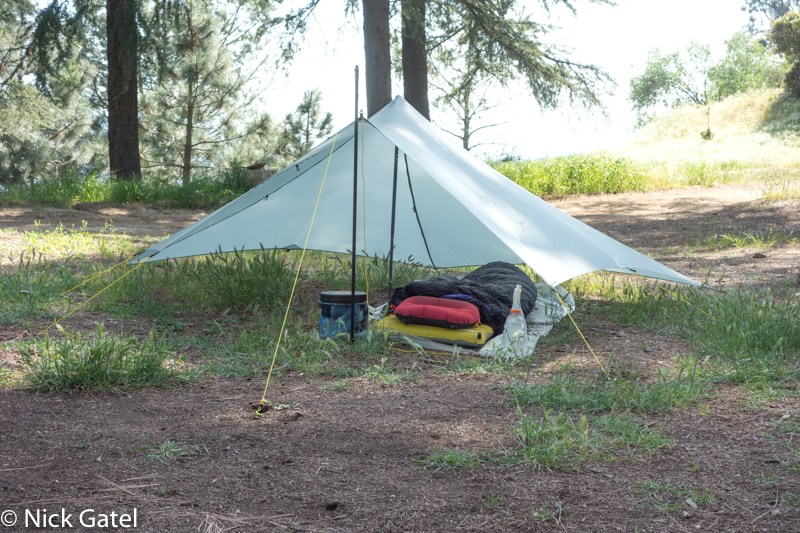
- “When it is cold, damp, or raining the silnylon sags and I have to get up, go outside and tighten all the guylines.”
Yes, silnylon does “sag” a little when it cools down at night and when it gets wet. But not much for me. Take a look at the picture below:
This picture was taken in the morning. I had spent the night next to the ocean with chilly temperatures and overnight fog that soaked the shelter. It is still quite taut.
Here is another example:
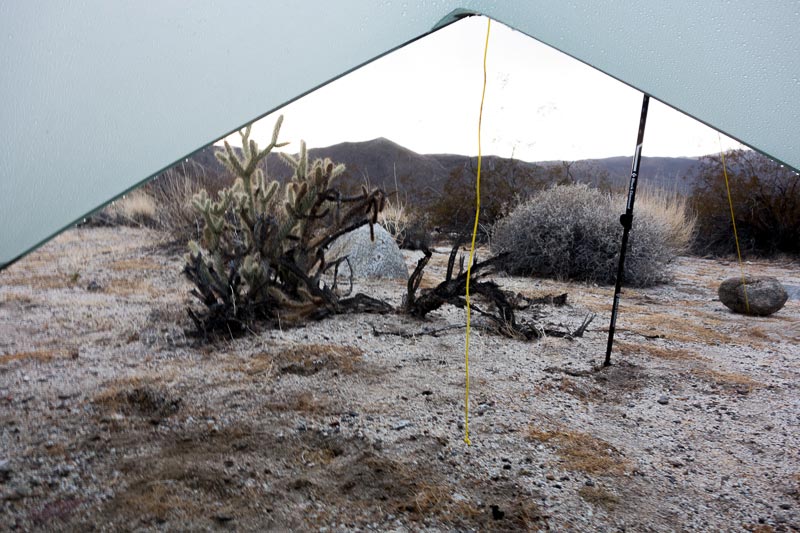
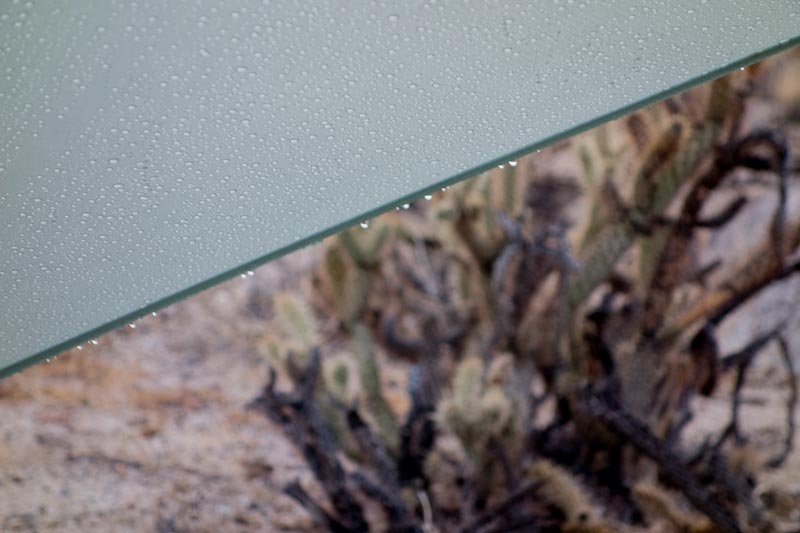
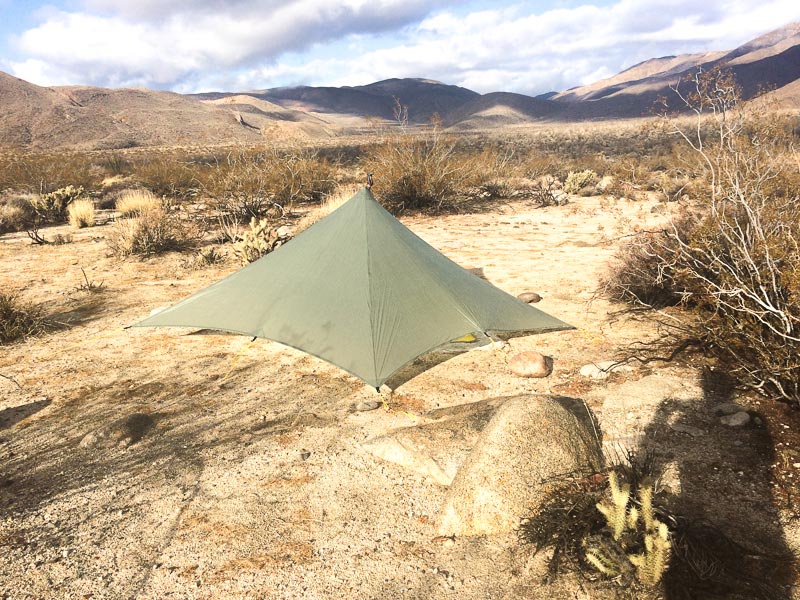
- “There is no zipper or dedicated door to get in and out of the shelter. I have to squat and walk like a duck or crawl in and out on my hands.”
Correct. Zippers and other components to make a “door” create weak points in a shelter’s structure. That’s the beauty of the TrailStar; nothing to break. Oh, and I’m 67 years old and don’t have difficulty getting in and out.
- “I can’t completely seal it up to keep mosquitoes out.”
No, you can’t. I get by just fine with a head net.
The TrailStar can take a lot of “tightening” to get a really taut pitch. I use 3mm cord in the LineLoc 3 guyline adjusters and really crank things down. Many people use lighter cord to save weight and I have found that lighter cord will slip overnight, especially in the wind. In addition I use stakes with significant holding power: Easton 8” stakes, 7.5” MSR Groundhogs, and sometimes I bring long snow stakes if I anticipate loose sand. Stakes, guylines, and an initial taut pitch combine for satisfactory pitches. However, if the shelter needs additional adjustment during the night, one can adjust the center pole a little higher, and if LineLocs are used, it is easy to reach out, while inside the tent, and adjust all 10 guylines… yes, I always use all 10 stake points!
Benefits – the pictures tell the story
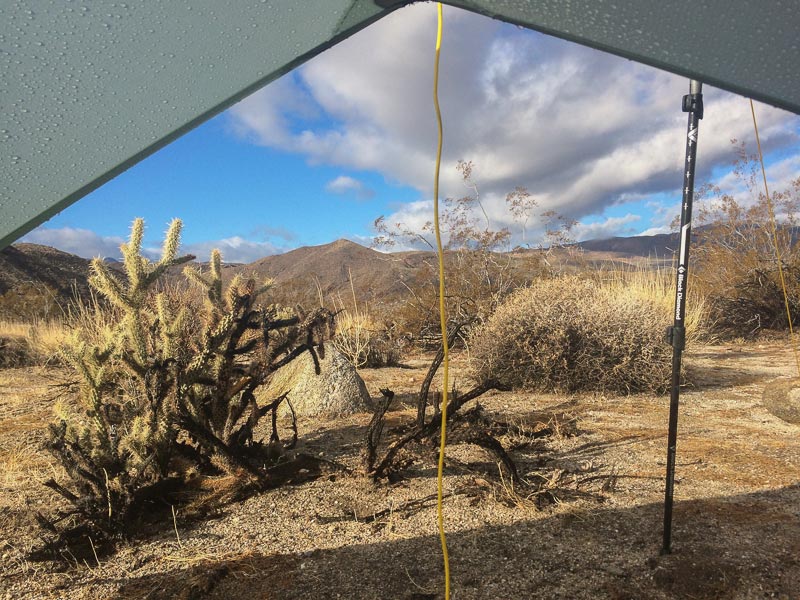
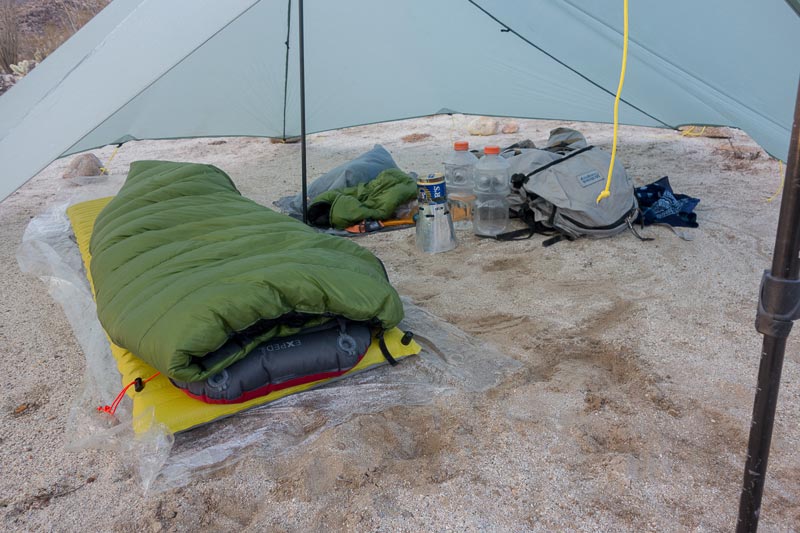
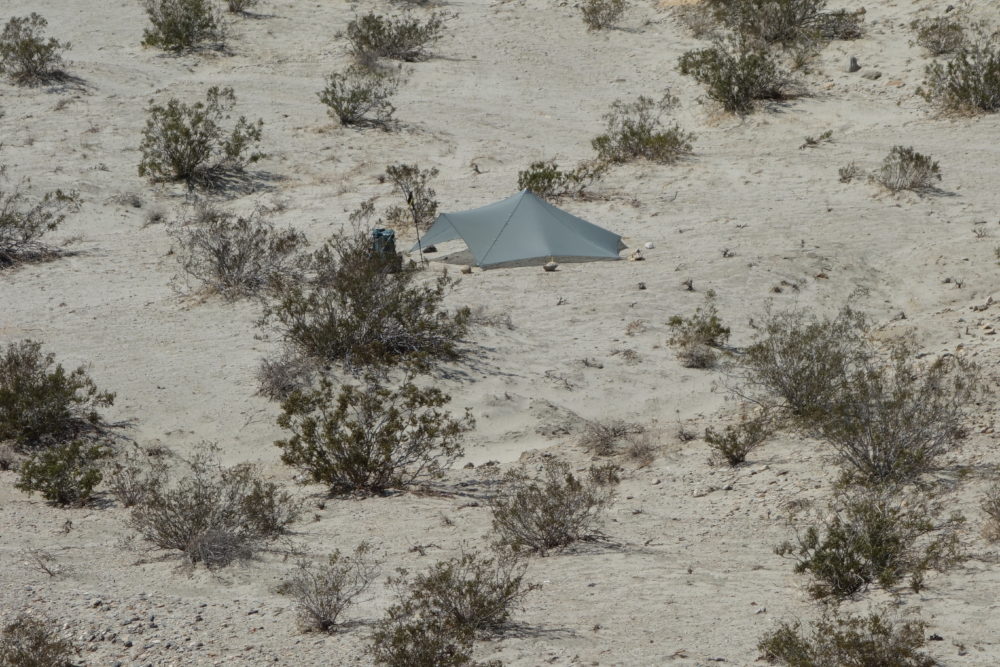
Just in case you want to know…
I paid full retail for this shelter. I have no relationship with Mountain Laurel Designs. I received (nor will I) no compensation for this review. There are no affiliate links in the post.
